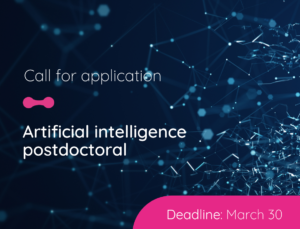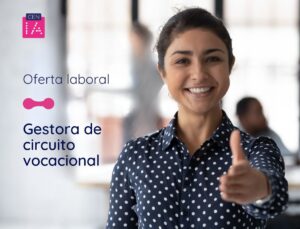
At the end of 2022, the National Agency for Research and Development (ANID) presented the results of the 2022 Exploration Projects competition, which seeks to finance research projects of excellence that have a high transformational potential and that contribute to consolidating scientific-technological research in the country.
The list of awarded projects includes two involving Cenia researchers. The first project selected corresponds to the area of “Arts, Social Sciences and Literature,” with the participation of Pamela Guevara, Electronic Civil Engineer and PhD in Physics, and Esteban Pino, Electronic Civil Engineer and PhD in Engineering Sciences, both academics from the Faculty of Engineering of Universidad de Concepción. The second project selected in the “Inter and Transdisciplinary” category involves the participation of Cenia’s main researcher, Cristóbal Rojas, who is also an associate professor at the Institute of Mathematical and Computational Engineering (IMC UC).
EMOCREA, the mobile application for working on emotions with children
‘Emocrea, discover and recreate your emotions in virtual reality environments using neuroscientific and artificial intelligence techniques’ is a project led by Dr. Mabel Urrutia Martínez, PhD in Linguistics and academic of the Faculty of Education at Universidad de Concepción, with the participation of Cenia researchers Pamela Guevara and Esteban Pino, both from the RL3 line “Artificial intelligence inspired by the brain.”
This project seeks to be part of the solution to the problems of emotional education in children, through the implementation of virtual reality games that allow the recognition, expression and self-regulation of emotions and empathy. Pamela Guevara explains that “the lack of emotional education produces instability in children, as they do not know how to recognize or regulate their emotions. This generates insecurity and affects personal and social skills.”
This innovative proposal is designed based on an interdisciplinary perspective that merges theories, methods and techniques from various disciplines such as neuroscience, education, psychology and artificial intelligence. “The project is innovative because it seeks to promote the education of emotions in children and teenagers, an aspect that has been undervalued and is of utmost importance. On the other hand, it is disruptive because it proposes to use technologies such as virtual reality and artificial intelligence to create interactive teaching environments,” emphasizes the researcher. This project consists of three stages for its development and implementation.
The first stage will generate and validate emotional stimuli in different formats (linguistic, pictorial and multimodal), allowing its use to train the identification and regulation of different emotions in children and teenagers. The second stage will implement interactive virtual environments that allow the training of emotions. The third stage will set up this system in the CICAT (Interactive Center for Science, Arts and Technology), to be used by children and young people of all educational levels in the Biobío and Ñuble Regions.
Early diagnosis of neurodegenerative diseases
“Looking through the window: novel analysis of electroretinogram based on complexity for the diagnosis of neurodegenerative diseases” is the name of the project led by Leonel Medina, PhD in Biomedical Engineering from Universidad de Santiago (Usach), which involves the participation of Cenia’s main researcher Cristóbal Rojas, from the RL2 line “Neuro-symbolic artificial intelligence.” The proposal aims to contribute to the early diagnosis of neurodegenerative diseases such as Parkinson’s and Alzheimer’s, a disease that is on the rise and that in our country is already estimated to affect 180,000 people, approximately, with this or other dementias, and that is projected to reach 626,000 people by 2050.
The proposal arises from the results of the paper “Multiscale entropy analysis of retinal signals reveals reduced complexity in a mouse model of Alzheimer’s disease,” a study published in the journal Scientific Reports, which demonstrated a relationship between the function of the electrical activity generated in rodent retinas and the early presence of Alzheimer’s disease: “There is a principle in physiology that the biological complexity of living beings decreases with both aging and disease. In particular, complexity in neuronal activity is affected by neurodegenerative diseases such as Alzheimer’s disease. In this work we apply a mathematical method based on the notion of information and entropy to estimate the complexity of neuronal activity in the retina of two groups of mice (one with the disease and one control group) under different visual stimuli. The results suggest that the tool has potential as an early diagnostic method,” explains Cristóbal Rojas.
For the researcher, this project, based on the aforementioned study, aims to explore the possibilities offered by this and other similar tools when applied to humans, which involves a diversity of tasks in different fields and requires the participation of specialists from diverse areas such as biomedical engineering, neurology, neurophysiology and ophthalmology.
Cristóbal Rojas’ expectation in relation to this new challenge and his work at Cenia is to be able to collaborate with other lines of research in certain specific tasks, such as, for example, the generation of visual stimuli. “Ideally we would like to have a tool that allows us to generate images or videos with certain particular characteristics, such as a specific complexity. This is fundamental to be able to better understand what type of stimuli are more appropriate to trigger a response in the retina that allows us to observe what we are looking for,” he concludes.







